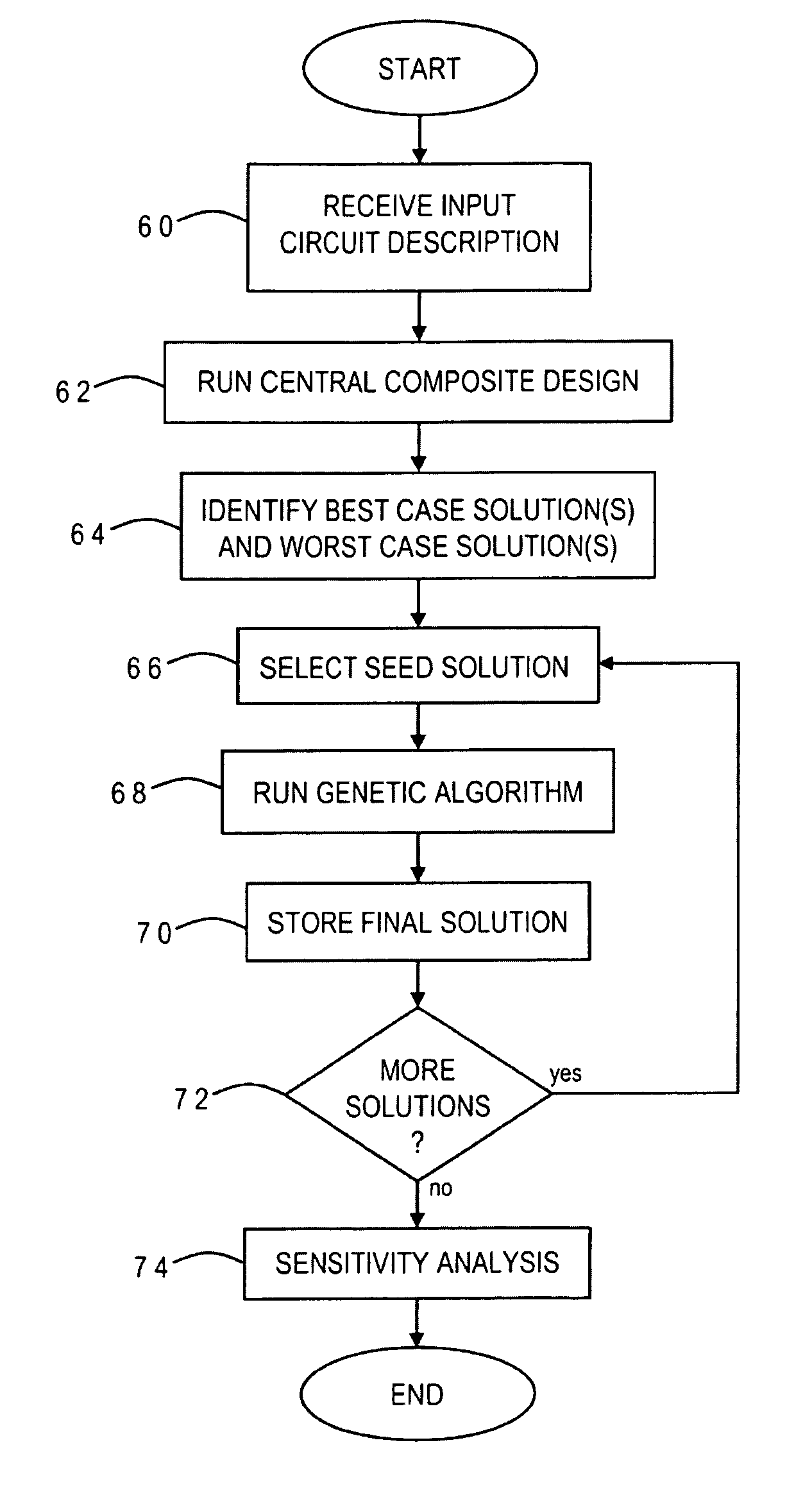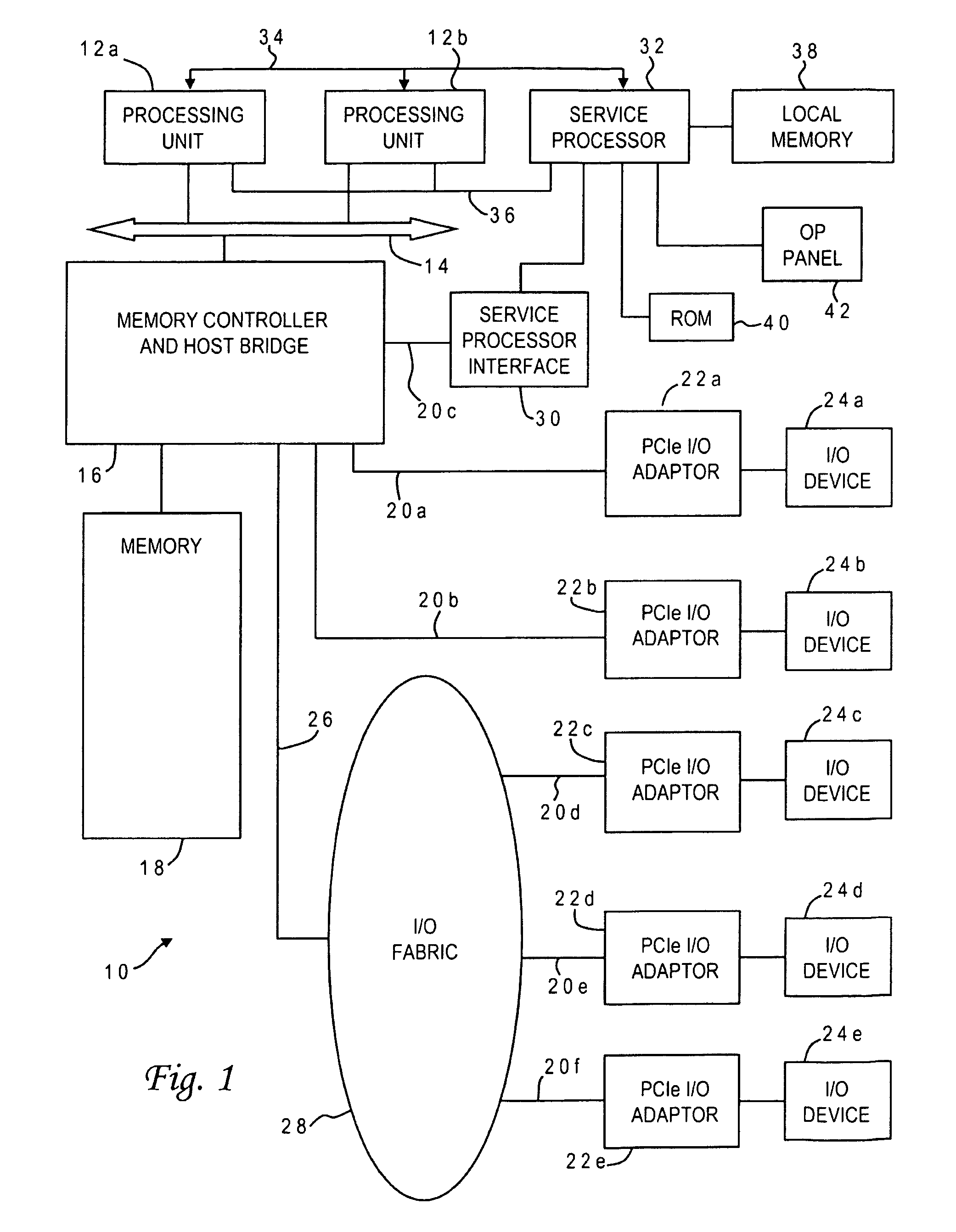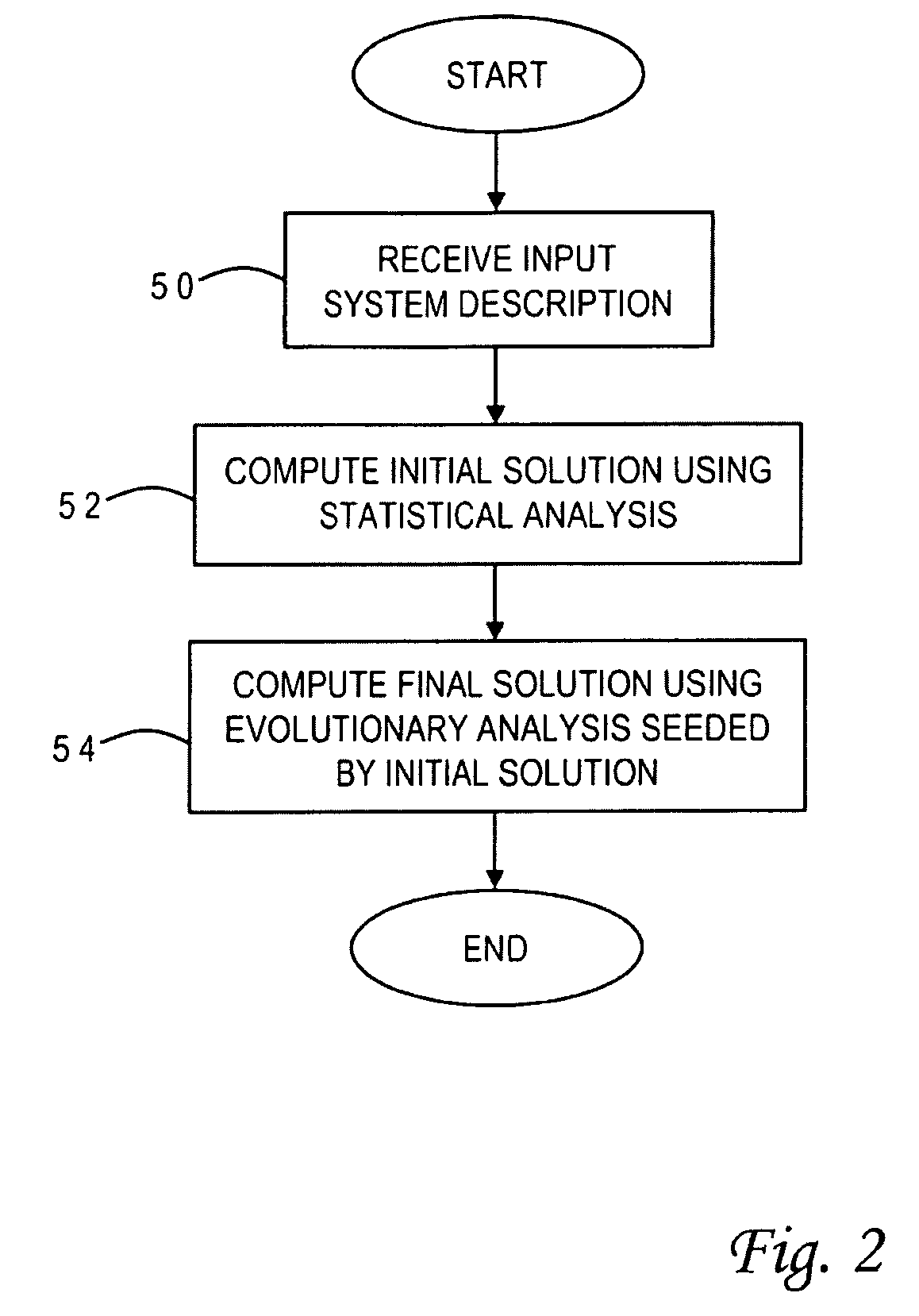Solution efficiency of genetic algorithm applications
a technology of genetic algorithm and solution efficiency, applied in the field of simulating complex systems, can solve the problems of large number of cells, difficult physical design without the aid of computers, and complicated connections between cells
- Summary
- Abstract
- Description
- Claims
- Application Information
AI Technical Summary
Benefits of technology
Problems solved by technology
Method used
Image
Examples
Embodiment Construction
)
[0025]The present invention is directed to an automated method for optimizing complex systems, particularly very large scale integrated (VLSI) circuits, which possesses the computational efficiencies of statistical analysis and the optimization benefits of evolutionary computing but avoids the pitfalls of these two approaches. Statistical analysis can easily miss nonlinearities in the design space because of the faulty assumption that sampling points will be representative of the global space. Evolutionary computation works well in a local space as it focuses in on a desired result but can be extremely inefficient in finding a global solution, particularly with a bad initial population set. The invention overcomes these deficiencies by using results of statistical analysis to seed (or prime) the evolutionary analysis as explained in further detail below. The method of the present invention thereby provides significant reduction of time-to-solution for a variety of complex systems, ...
PUM
 Login to View More
Login to View More Abstract
Description
Claims
Application Information
 Login to View More
Login to View More - R&D
- Intellectual Property
- Life Sciences
- Materials
- Tech Scout
- Unparalleled Data Quality
- Higher Quality Content
- 60% Fewer Hallucinations
Browse by: Latest US Patents, China's latest patents, Technical Efficacy Thesaurus, Application Domain, Technology Topic, Popular Technical Reports.
© 2025 PatSnap. All rights reserved.Legal|Privacy policy|Modern Slavery Act Transparency Statement|Sitemap|About US| Contact US: help@patsnap.com



